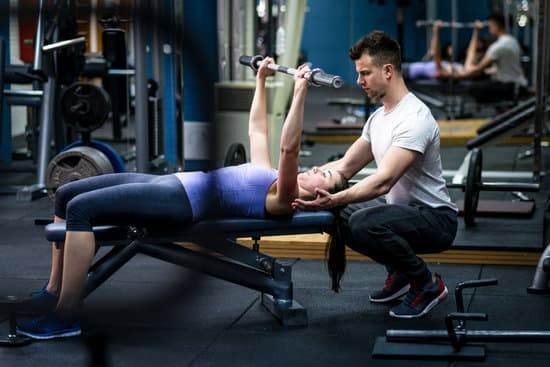Introduction
A Personal Trainer is a health professional who designs and delivers exercise programs to individuals who want to achieve specific goals and achieve greater levels of fitness. They are also able to give nutritional advice and help clients stay motivated on their health journey.
In order to become a qualified Personal Trainer, you need to complete a training program that meets your desired level of certification. This program will provide you with the knowledge, experience and certification needed to confidently work with clients and assist in guiding them towards achieving their fitness goals.
When selecting the right qualifications for becoming a Personal Trainer, it is important to consider factors such as cost, duration, practical experience and accreditation from official organizations. Additionally, ensure that any course or qualification covers both theoretical background as well as hands-on application of theoretical information so that you can gain the relevant experience required for this profession.
Furthermore, once you have obtained your qualifications make sure they are recognized by organizations such as the National Strength & Conditioning Association (NSCA), Australian Strength & Conditioning Association (ASCA) or other governing bodies in whichever country you intend on working in. Other things you may want to look into is obtaining insurance which often accompanies qualifications like first aid certificates, CPR awareness among other related certifications. Finally, Become an informed consumer when doing research around choosing the right qualifications – understanding necessary paperwork requirements such as time spent being coached or supervised can greatly affect your overall success in this field of work.
Educational Requirements
In order to become a personal trainer, a specific educational qualification is not strictly required; however, many course organizers, employers and insurance companies will want to make sure that the candidate has attained some sort of formal education. There are many different qualifications available from universities and other institutions which will offer beneficial knowledge and experience.
1. Universities: A degree in something related to exercise science or sports studies can help you to enhance your understanding of human anatomy and physiology, which may be necessary when working with individuals on a professional level. Some degree subjects offered by universities around the world are Physical Education, Sport Science, Exercise Physiology, Sports Psychology and Active Health.
2. Diplomas: These tend to encompass more of the practical side of becoming a Personal Trainer, introducing individuals to techniques such as teaching group classes like circuit training or teaching specialised equipment such as treadmills or weights machines. Examples include Certificates III & IV in Fitness or Group Exercise Instructor Certifications through professional body certifications available around the world with organizations such as ACE, ASCM and NESTA.
3. Seminars / Short Courses: Many organizations offer short-term seminars for those interested in expanding their knowledge on topics related to personal training such as nutrition education or communication skills for trainers. These seminars may not always be essential but can widen your knowledge base significantly over time, allowing you to gain further accreditation with certain bodies worldwide for increased credibility amongst potential clients or employers.
Overall having some sort of educational background is useful when looking at building up a profile as a Personal Trainer but is not necessary when it comes down to doing an effective job once employed within the industry; practice and knowledge based on personal experiences are key components too!
Professional Certifications and Licensing
To become a personal trainer, you will need a professional certification. This certification is usually provided by fitness organizations such as the American College of Sports Medicine (ACSM), the National Strength and Conditioning Association (NSCA), and the American Council on Exercise (ACE). Each organization offers different certifications available to individuals who wish to specialize in specific areas of fitness training including group exercise programs, strength and conditioning, older adults, physical rehabilitation, etc.
The ACSM is one of the most popular certifications among personal trainers. It includes a comprehensive exam covering topics from anatomy and nutrition to exercise physiology and special populations that can take anywhere from 6-8 hours to complete. Those who successfully pass this test earn either an ACSM Certified Personal Trainer (ACSM-CPT) credential or an ACSM Health Fitness Specialist certificate.
Having a professional certification allows potential employers to distinguish between qualified trainers and those without credentials. It also helps demonstrate your knowledge and experience in personal training and makes you more marketable in today’s competitive health industry. Aside from obtaining a formal certification, having CPR/AED certifications along with basic first aid knowledge is recommended for any personal trainer. Finally, some countries require certified trainers to have proper licensing or registration before they are allowed to practice professionally in their jurisdiction.
Membership and Professional Bodies
In order to be a personal trainer, there are certain requirements you must have. Firstly, it is recommended that you become a member of one or more professional bodies that specialize in health, exercise and fitness training. The benefits of joining these organizations are vast, not just for the qualifications you will gain, but also for the networking opportunities and access to resources that can help you grow as a professional.
When looking at potential memberships and professional bodies, it’s important to consider qualifications and training courses they offer, any fees required and the reputation of said body within the industry. You should ask yourself whether your qualifications would be accepted by prospective employers of clients and if membership provides a sound investment into your development as a personal trainer.
Networking is an invaluable part of being a successful personal trainer so don’t be afraid to search out events hosted by professional bodies at which you can meet other like-minded individuals within the fitness industry who can help to develop your career further. Attending such events when possible could lead to interesting opportunities down the line or even just make helpful connections that could benefit you in the long run.
Insurance
To be a personal trainer, there are various qualifications you may need depending on where you live and your specific specialization. Generally, trainers must have at least a certification from an accredited organization, although there may be additional requirements such as having certain educational qualifications or experience. Most trainers will need to obtain CPR/AED certification and also obtain a first aid certificate with the necessary training hours.
Having professional liability insurance is beneficial for anyone working in the health and fitness field. This type of insurance offers clients protection if something goes wrong during the course of their work with you, whether that is a physical injury to your client or damage caused to them due to providing incorrect advice or services. Professional liability insurance can help protect your business financially should there be any complaints or claims filed against you.
There are different types of professional liability insurance policies to choose from and it’s important to review which plan best suits your needs. BusinessOwner’s policy (BOP) generally includes professional liability coverage which covers bodily injury, advertising injury, property damage etc. A Commercial General Liability (CGL) plan does not include professional liability coverage but covers bodily injury, property damage ,and medical payments for those injured when working with you or at your facility etc.) A Professional Liability Insurance Plan offers the widest range of coverages specifically designed for Personal Trainers and can include coverage for negligence (accidental errors), allegations of libel/slander/defamation, incidents relating to fitness instruction (if client suffers an injury while being trained). Companies like InsureFitness offer great options specific to personal trainers at reasonable premiums along with full information on each plan they offer so make sure you research all options before making a final decision.
Working Hours and Risks
As a personal trainer, you need to be aware of the physical demands and potential risks associated with the job. Personal trainers must understand basic first aid, identify medical or orthopedic limitations with clients, and must know how to minimize risk for injuries. Depending on where you are employed, you may need to possess specific certifications such as a nationally recognized personal training qualification and hold a current First Aid certification including CPR.
Personal training can often be physically and emotionally demanding in terms of delivering consistent quality service, finding clients, and staying up-to-date with the constantly changing trends in the industry. Working hours can involve early mornings, late evenings and weekends; all of which can have an impact on your work/life balance due to irregular hours worked.
Carrying out an initial screening process with each client is important in order to identify any existing medical conditions. It is worth gaining knowledge related to special populations like pregnant women or individuals with chronic conditions that require extra precautions such as those with high blood pressure or diabetes. You will also need good communication skills in order to connect with your clients so that they feel comfortable discussing their fitness goals. This will also include learning mechanisms for tracking progress as well as implementing motivational strategies in order to help achieve desired results for clients.
When taking on new clients it is critical to consider their needs first before providing them advice on exercise programming or nutrition guidance. Understanding safety measures such as proper weight lifting form; timing sets and reps; spotting technique; conducting risk assessments; installing effective warm-ups prior to workouts; cool-downs after exercise sessions are all important skills to possess if one wishes to be successful as a personal trainer. Additionally, being able to recognize signs of injury during exercises will help you create safe routines for all participants under your care.
Continuing Education
In order to be a successful personal trainer, you need more than just a certification. You must stay up-to-date with industry trends by taking continuing education courses or attending personal training conferences. This is important for trainers because the fitness industry is ever-evolving, and new information is constantly being released about everything from exercise programming to nutrition.
By taking continuing education courses or attending conferences, personal trainers will have updated knowledge on best practices and nutrition research related to health and fitness. This can provide your clients with an experience that meets their needs and reaches their goals. Additionally, pursuing continual education demonstrates your commitment to professional development as well as your reliability as an expert in the field of fitness. Furthermore, continuing education is applicable not only when helping others reach their health objectives but also in terms of developing your own individual learning and growth.
As a personal trainer, lifelong learning should be part of your career path. Investing in higher education updates you on current trends and gives opportunities to increase your client base or apply for promotions within organizations. Therefore, if you want to stand out among other trainers and advance in your profession, it’s essential that make time for ongoing training beyond your initial qualification.
Conclusion
To become a qualified personal trainer, one must obtain an accredited certificate in personal training. This typically involves in-depth knowledge of anatomy and physiology, risk assessment, nutrition and exercise instruction skills. Depending on the locality, additional certifications may be needed to earn the right to work as a Personal Trainer. Further qualifications such as first aid certification may also be necessary for some locations.
The process of becoming certified can involve studying at home or attending courses run by specialized organizations. Having the qualifications to become a Personal Trainer carries many benefits such as being able to help people achieve their fitness goals, improve lifestyle habits and developing meaningful relationships with clients. Additionally, qualified personal trainers have the potential to build a successful career path within the fitness industry with the opportunity for others to benefit from their expertise.

Passionate about providing useful information to anyone with an interest in the field of Personal Training, I strive to pass on to our readers quality information and to answer any questions about Personal Trainers, the work they do and how to become one.





